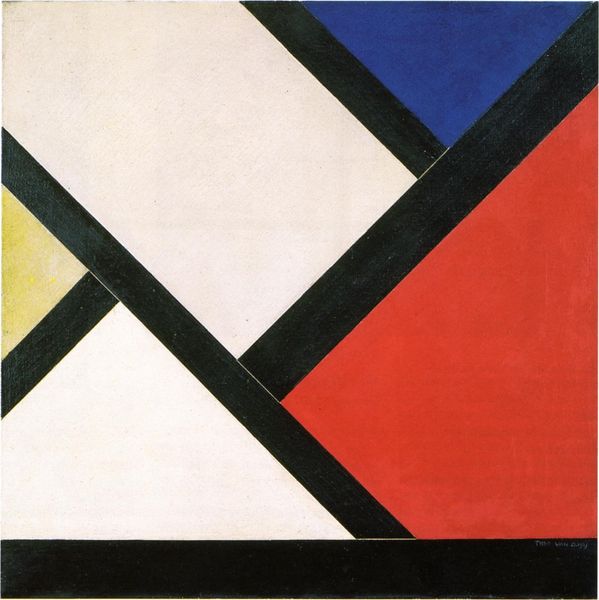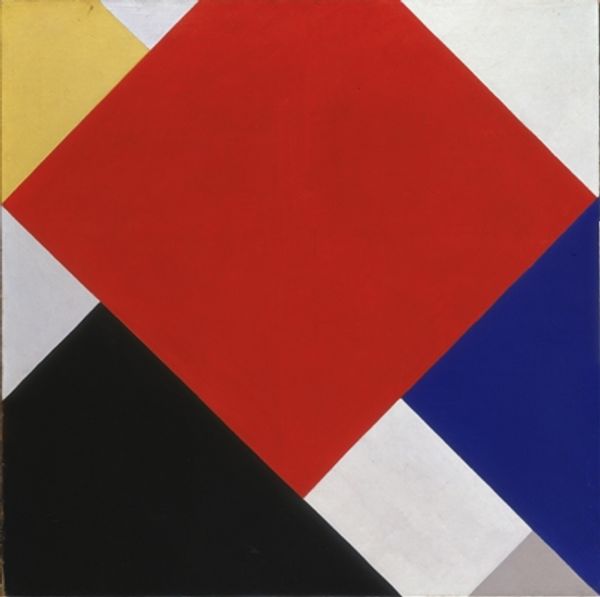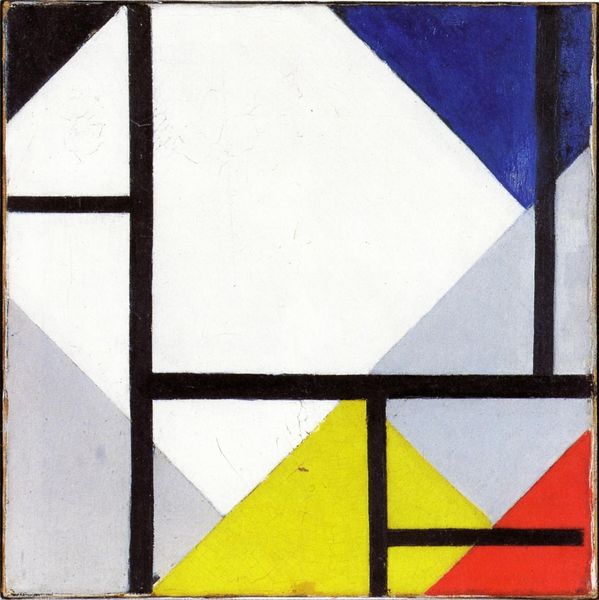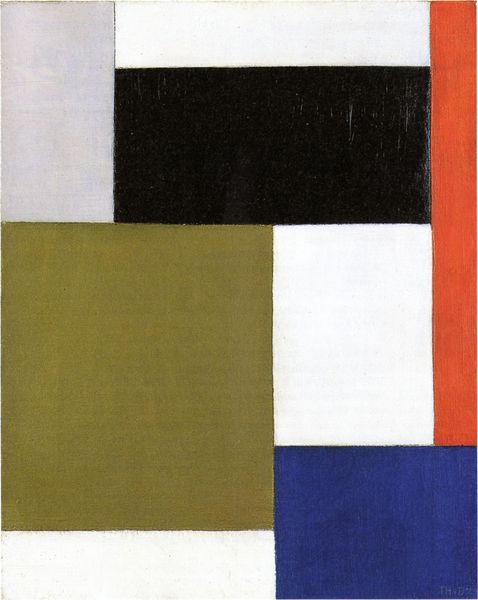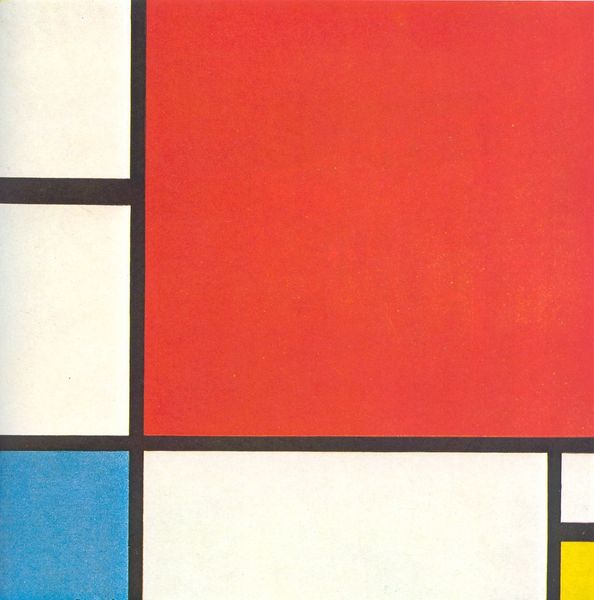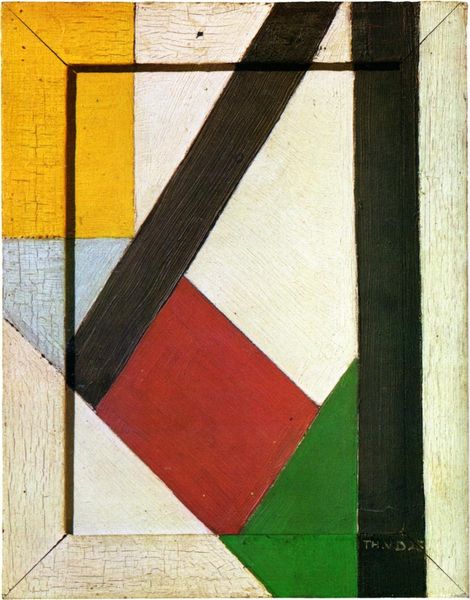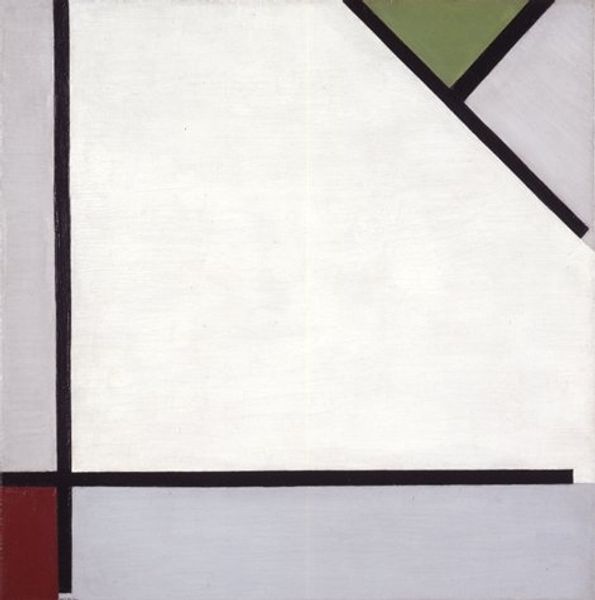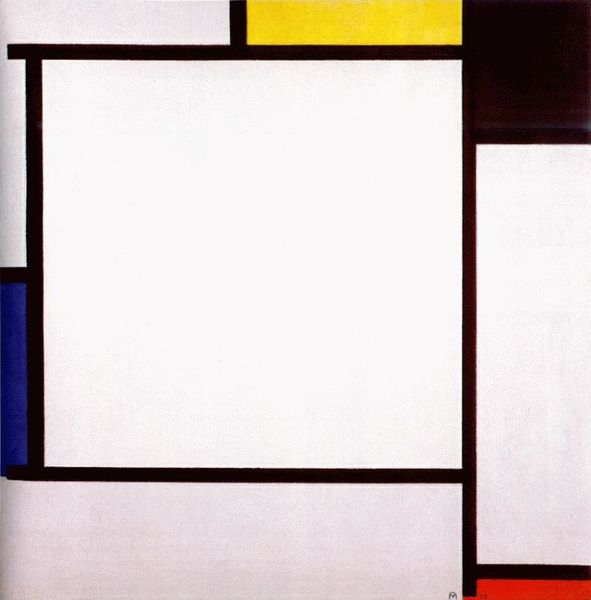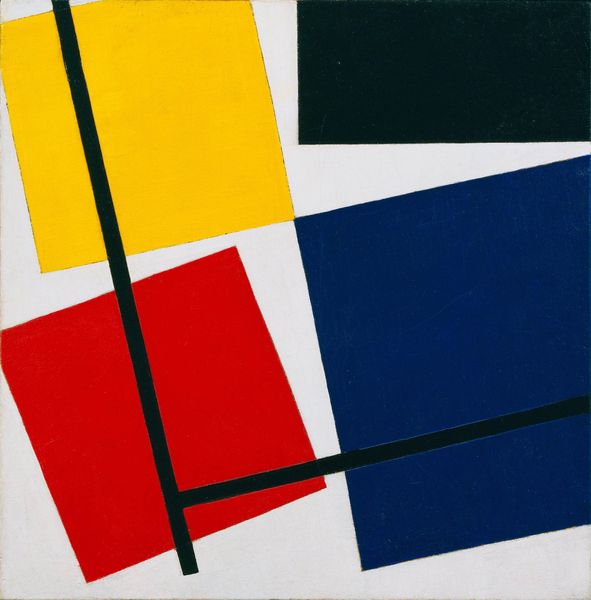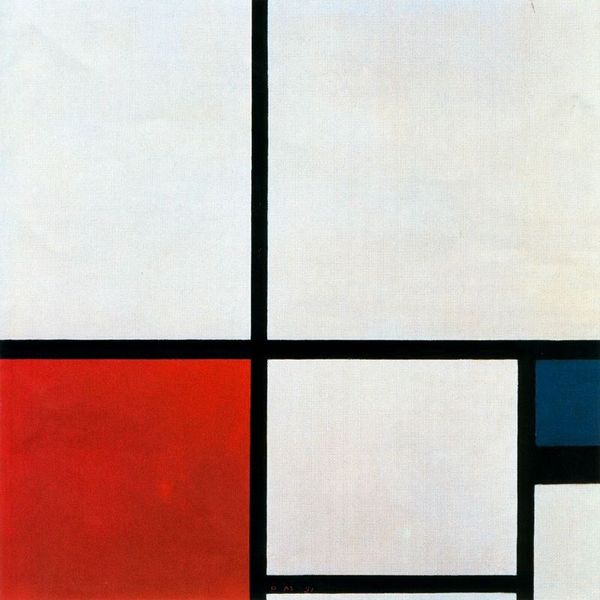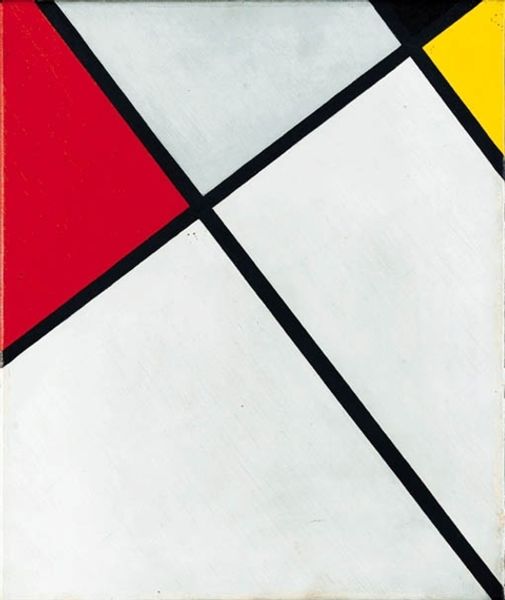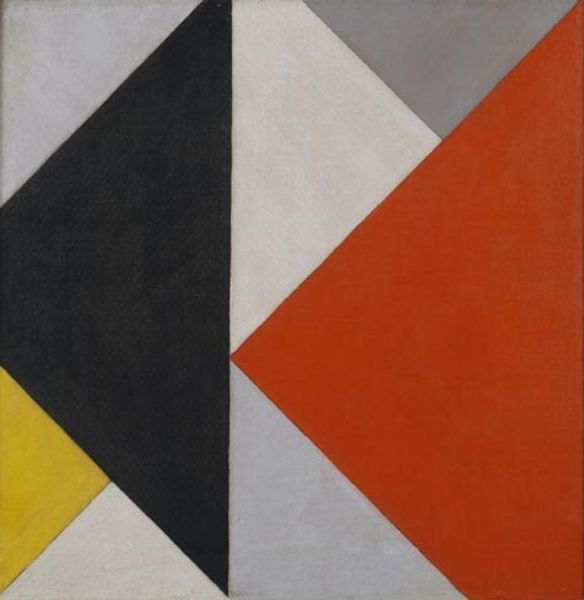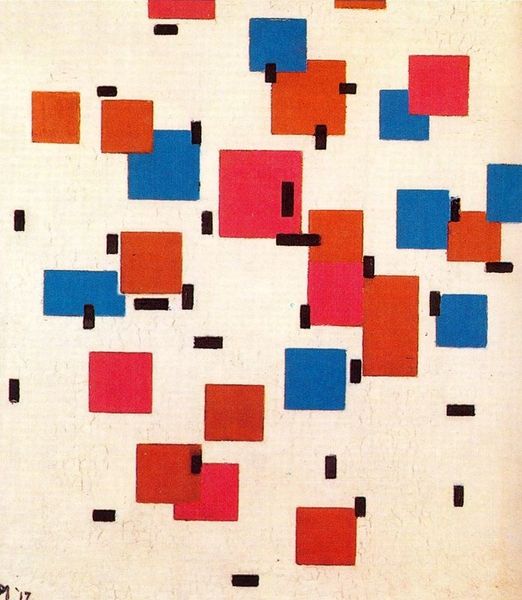
painting
#
de-stijl
#
painting
#
geometric composition
#
geometric pattern
#
abstract pattern
#
geometric
#
geometric-abstraction
#
abstraction
#
line
Dimensions: 50 x 50 cm
Copyright: Public domain
Theo van Doesburg made this oil on canvas painting called Simultaneous Counter Composition sometime between 1924 and 1929. Van Doesburg was a central figure in the Dutch art movement called De Stijl, which advocated pure abstraction and universality by a reduction to the essentials of form and colour. This square canvas shows how he worked with a limited palette of red, blue, yellow and black, and organized the surface into geometric forms. De Stijl emerged in the Netherlands during World War I, reflecting a desire for social order and spiritual renewal. The horrors of war led many artists to seek universal values. The style aimed at complete abstraction, with its utopian vision for society reflected in art, architecture, and design. The clean lines and primary colors were seen as a universal language to bring harmony and balance to the world. To fully appreciate this artwork, research into the manifestos and publications of the De Stijl movement will deepen your understanding of its original aims. With an understanding of those aims, you will appreciate how this work challenged existing social norms.
Comments
No comments
Be the first to comment and join the conversation on the ultimate creative platform.
